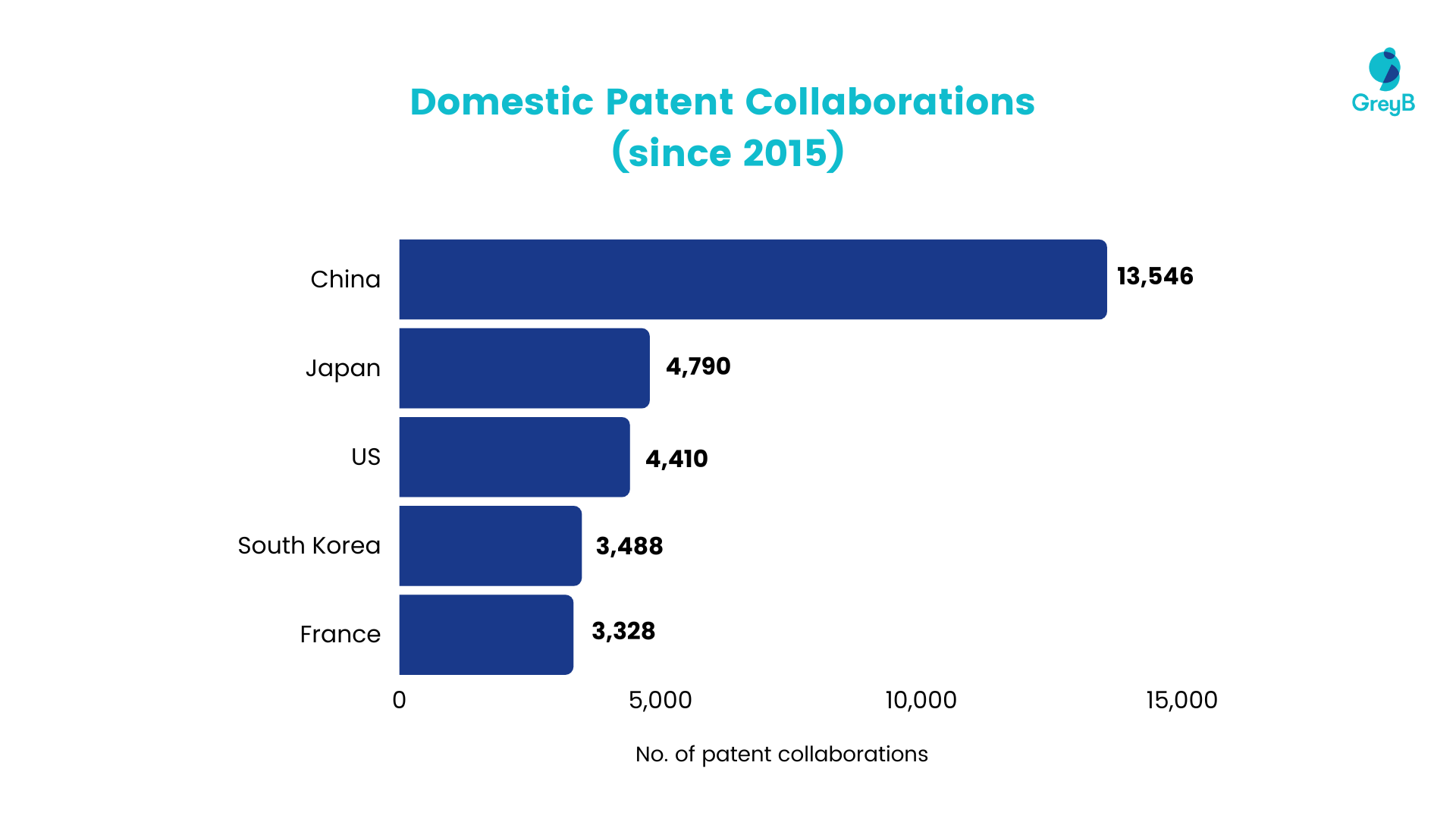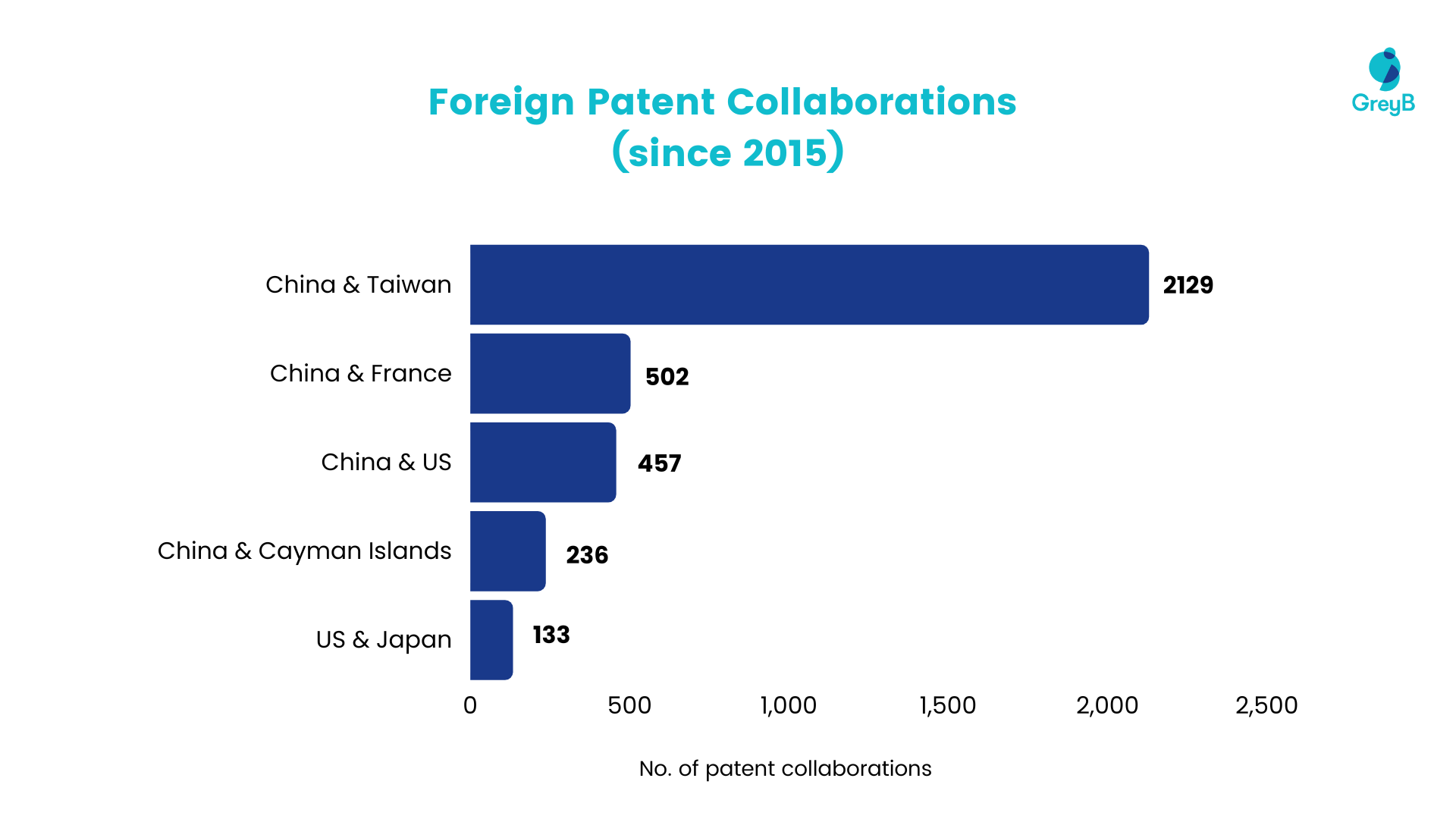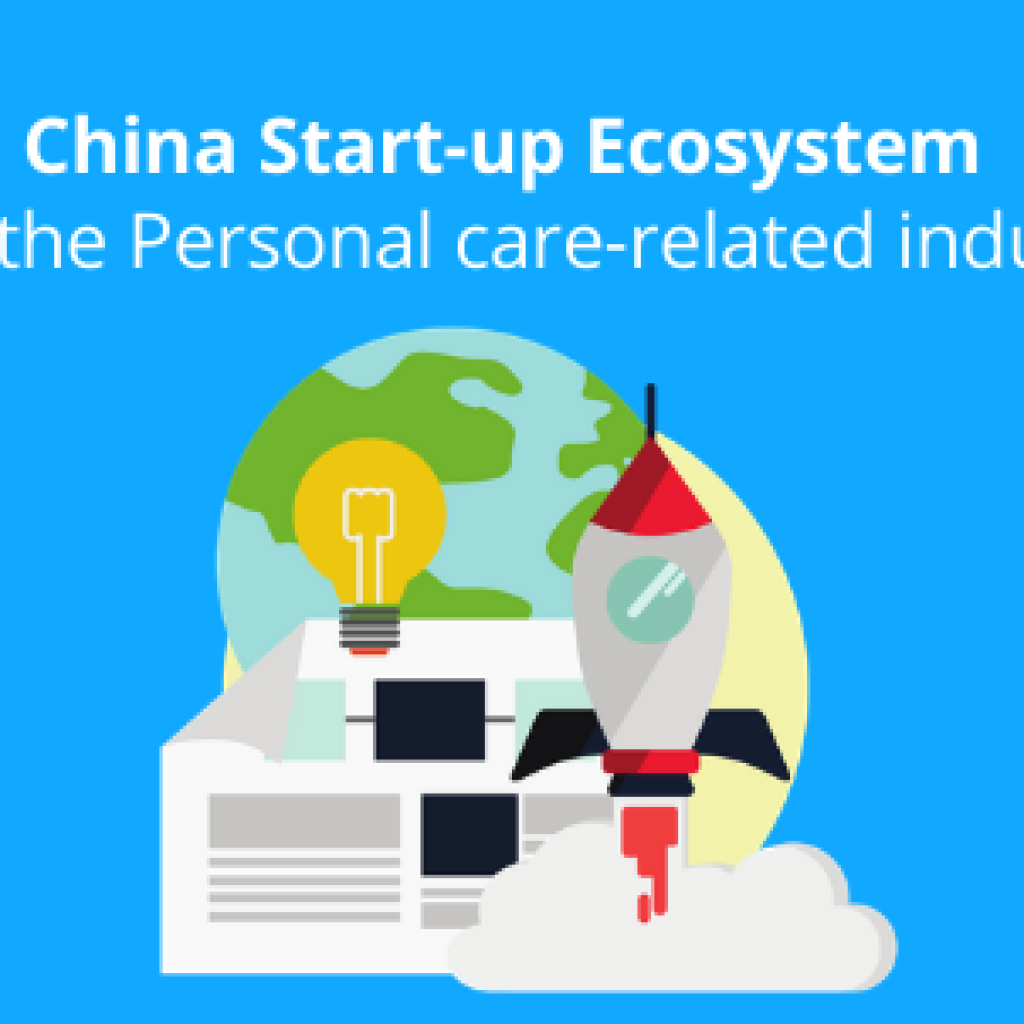Key Insights
Compared to its counterparts, China holds a 3x lead in patent collaboration. With a key focus on accessing technology.
Japan holds the second spot on this list, with most of the collaborations within the country, instead of foreign countries.
There has been a substantial increase in patent collaboration in the past few years. This is a big step towards faster innovations as the companies are sharing their tech and working together to bring in new advancements. Interestingly, China holds the top spot in patent collaborations within the country and with foreign countries.
In this study, we see how companies from different countries are collaborating to file patent applications in the United States Patent & Trademark Office (USPTO) and decode the filing strategy by China to increase its patent applications.
We mined out the data showcasing the collaborations of top countries in the US patent market. China, Japan, and the US filed the highest number of collaborated applications after 2015. A surprising number of companies from different countries came together to file applications in the US.
Patent collaboration among companies within the countries and with foreign countries


China has held the top spot in this segment with a 3x lead over its counterparts. They have collaborated with companies from their as well as other foreign countries. The huge filing activity might be a result of the 5-Yearly Plans by the China government. In the last decade, the Chinese government has laid an emphasis on developing the country’s IP. [Source]

Read why China is going to be the next innovation hub?
Japan, on the other hand, holds the second spot with most of the collaborations within the country.
But why is China collaborating with foreign countries?
The most important factors are cost-sharing and reducing the risks for individual firms. This allows the contributors to share their tech and save time on a lot of repetitive research.
Chinese companies and research institutions are expanding their operations and presence on a global scale via these collaborations. This is also helping Chinese companies build a strong global patent portfolio, that ultimately reduces their friction to enter new markets. There are many more factors, depending on the industry type.
This over time has turned out to be efficient for the contributors, as they are creating new market spaces, and better technical advancements and sometimes they get to share the technologies as well.
Other than these visible events there are a lot of strategic decisions behind these collaborations. The companies save huge R&D spending and time and leverage their collaboration to have easy access to the tech. These collaborations have also resulted in a complete evolution of technology as both companies have specialization in different domains. Due to this, some companies are consistently collaborating in IP.
The collaboration between China and Taiwan on patents, for example, is driven by strategic considerations such as accessing technology, expanding markets, pooling resources, protecting intellectual property, promoting knowledge exchange, and gaining a competitive advantage.
Collaboration between China and Taiwan to Access Semiconductor Technology
Most of these collaborations have been in the semiconductor industry, depicting the strategic partnerships between the Asian tech giants. As the world is heading towards 3nm chips, this can be very crucial for China.
Some of the top collaborators from China and Taiwan in the field of patents include:
- Hon Hai Precision Industry Co., Ltd. (Foxconn): Foxconn is a major technology company based in Taiwan that collaborates with various Chinese companies on patents, particularly in the electronics and telecommunications sectors.
- Huawei Technologies Co., Ltd.: Huawei, a leading global provider of telecommunications equipment and consumer electronics, collaborates with companies from both China and Taiwan on patents related to mobile communications, networking, and other technology areas.
- TSMC (Taiwan Semiconductor Manufacturing Company): TSMC collaborates with Chinese companies on semiconductor-related patents, leveraging its expertise in advanced semiconductor manufacturing processes.
- ZTE Corporation: ZTE, a multinational telecommunications equipment and systems company from China, engages in patent collaborations with Taiwanese companies in the telecommunications and networking domains.
- MediaTek Inc.: MediaTek, a Taiwanese semiconductor company, collaborates with Chinese companies on patents related to mobile chipsets, wireless communication technologies, and other semiconductor applications.
Taiwanese fabrication plants dominate the semiconductor fabrication or foundry market, earning over 60 percent of global revenue. China in the last few years has filed the highest number of semiconductor patents as they have been impacted over the last five years by export controls imposed by the United States. American sanctions have made it difficult for Chinese companies to access the technology needed to fabricate the advanced chips. Hence the China and Taiwan collaboration can be crucial, as they look forward to developing their own advanced chips.
Conclusion
Through these collaborations, China strategically leverages other’s expertise, taps into new markets by getting access to launch products in the country’s jurisdiction, share resources, enhances intellectual property protection, fosters learning, and strengthens their overall competitiveness. One such example is Huawei and its strategic partnership with Ericsson. By working together, companies from both regions aim to drive innovation, expand their market reach, and contribute to the technological advancement of both countries.
This trend will likely continue to thrive as technology-driven industries evolve rapidly. Furthermore, these collaborations not only benefit individual businesses but also contribute to the broader global technological landscape. We can expect a substantial increase in cross-domain collaborations where companies from different industries will bring fresh perspectives and solutions to complex challenges.
Next Read: NIO Business Model: Aiming for Apple Like Ecosystem
Authored By – Sahil Kapoor, Product Development Team
Edited By – Nidhi, Marketing









